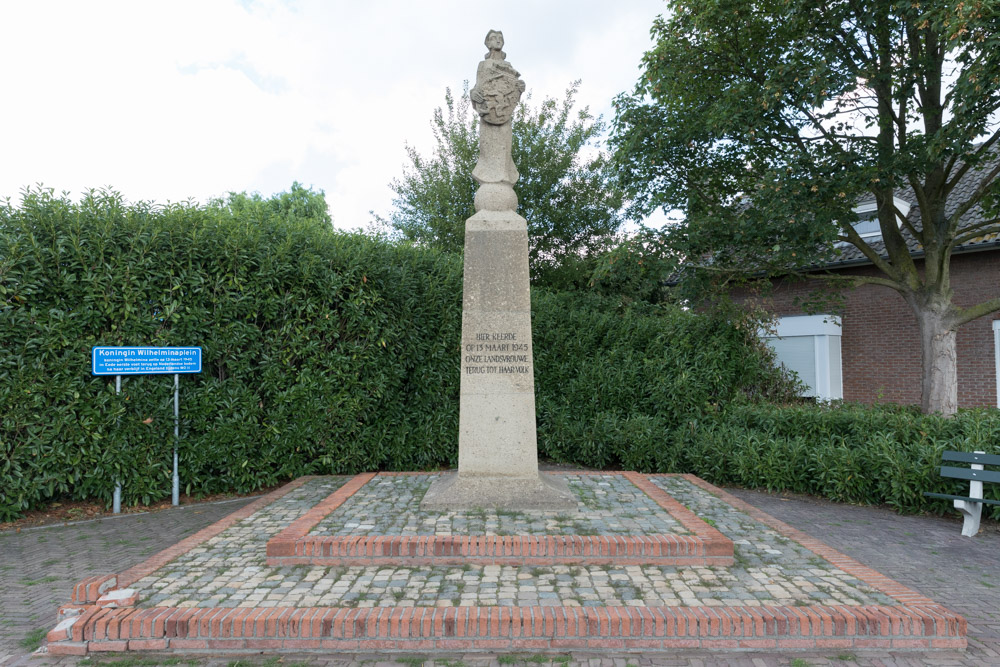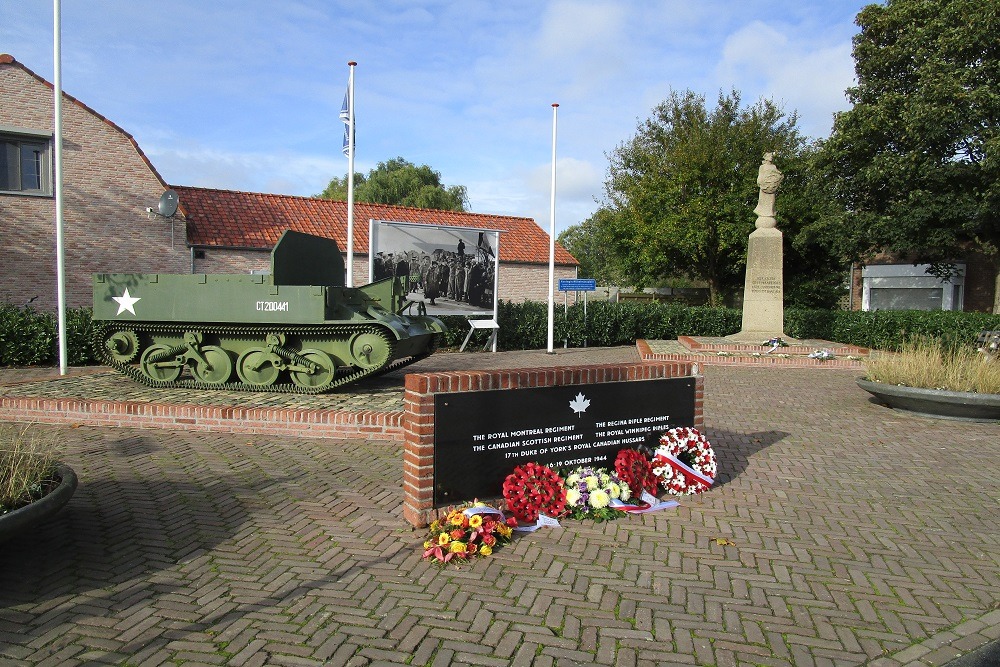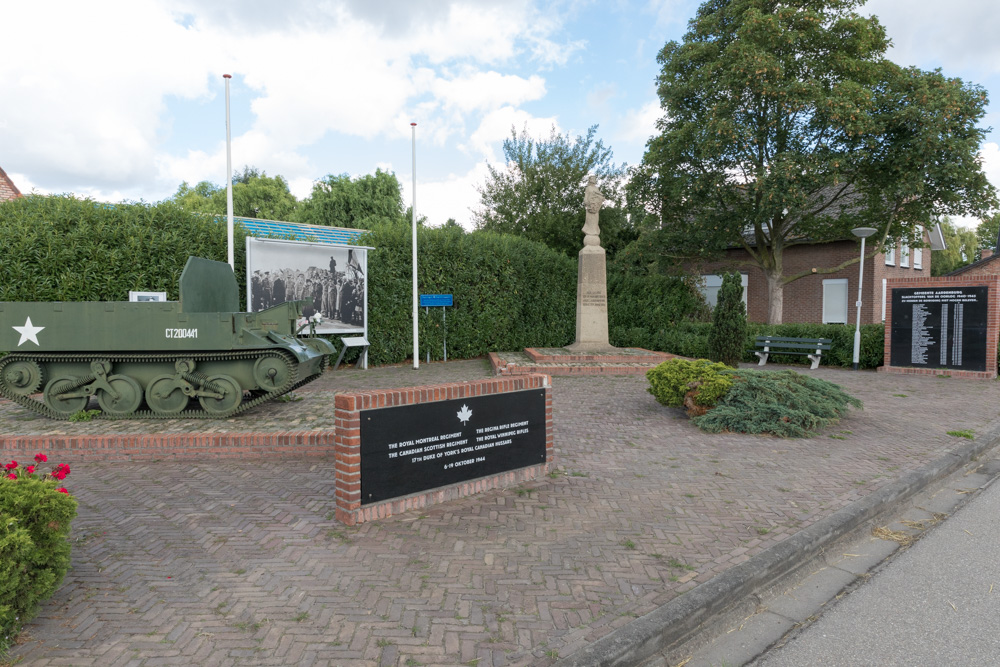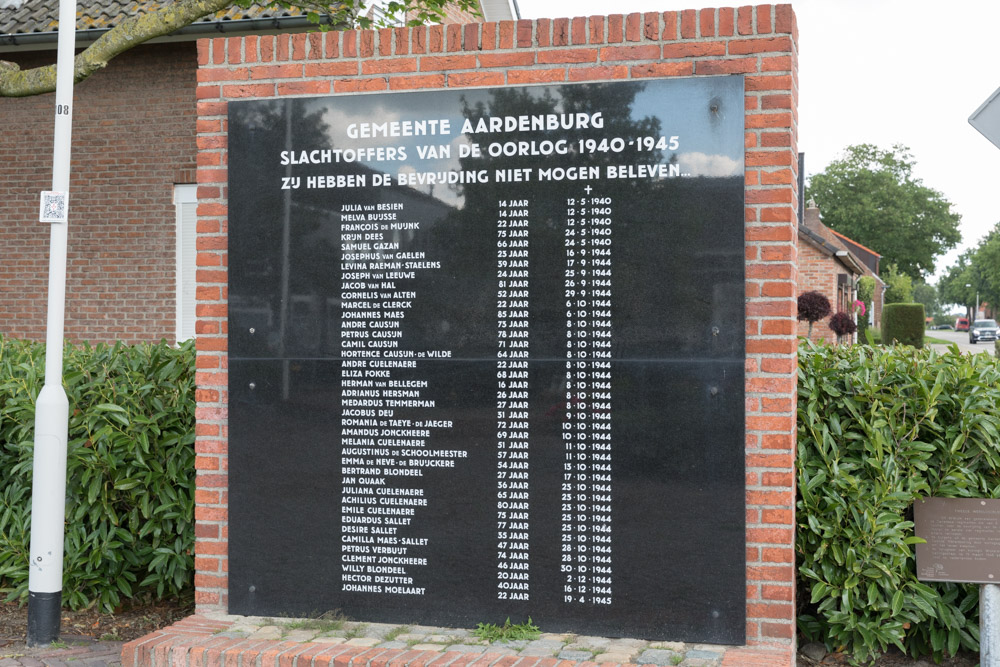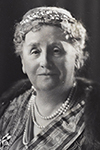National Memorial "The Dutch Virgin"
The statue was unveiled in 1954 by Queen Juliana in the presence of Prince Bernhard.
The design is by Peter Roovers.
On March 13th 1945 Queen Wilhelmina returned to The Netherlands after having been almost five years in exile in London. She selected Eede as the spot for crossing the national border. This because the village is situated in a region which had extremely suffered from the violence of war resulting in tremendous destruction and many victims. The arrival of the Queen symbolized the end of years of repression and limitations of liberty and also the beginning of a new era of peace and prosperity. On March 13th the Queen, arriving from Brussels and Antwerp, drove through Maldegem to Eede. There she got out of her reinforced armored car and walked briskly across the borderline which had been marked with flour for this aoccasion. Years afterwards she mentioned this crossing in her memoires, "One of the most important experiences in my Life".
On the statue for the return of Queen Wilhelmina of the following:
Here came
on March 13, 1945
our country lady
back to her people
On the blue sign next to the statue the text:
Koningin Wilhelminaplein
Queen Wilhelmina set on March 13, 1945 in
Eede her first foot back on home soil
After her stay in England during WOll
In addition to the monument for the victims is an ANWB sign with an explanation of the entire monument on the square with the following text:
Eede Second World War.
This triptych of memorials recalls;
1. Canadian regiments that of 6-19 October 1944
fought for the liberation of the town Aardenburg.
Especially the first four regiments suffered heavy losses;
2. the citizens of the town Aardenburg during the
Second World War who lost their lives by war violence;
3. the return of Queen Wilhelmina after five years
exile. On March 13, 1945 in Eede she put her
foot on home soil.
The Prince
Bernhard Anjer
Fund Fund
Do you have more information about this location? Inform us!
Source
- Text: Mia van den Berg
- Photos: Arjan Vrieze (1), Dick de Bruijne (2, 3)
Nearby
Museum
- Canada War Museum - Adegem (Maldegem)
- Poland War Museum - Adegem (Maldegem)
- Museum Switchback Oostburg - Oostburg
Point of interest
- Air Observation Tower 3W3 - Aardenburg - Eede
- Bailey Bridge across the Leopold Channel - Sint-Laureins
- V-2 Impact Site St. Kruis - St. Kruis
Monument
- Memorial Civilian Victims Aardenburg - Eede
- Canadian Memorial 6-9 October 1944 Eede (Bren Carrier) - Eede
- Memorial Carabineers Cyclists Maldegem - Maldegem
Cemetery
- Belgian Graves Veterans Middelburg (Maldegem) - Middelburg (Maldegem)
- Belgian War Grave Middelburg (Maldegem) - Middelburg (Maldegem)
- Commonwealth War Graves Aardenburg - Aardenburg
Fortification
- Hollandstellung - Remains Personnel Bunker Maldegem - Maldegem
- Hollandstellung - Heavy MG Bunker Maldegem - Maldegem
- Zweitestellung - Storage Bunker Maldegem - Maldegem
